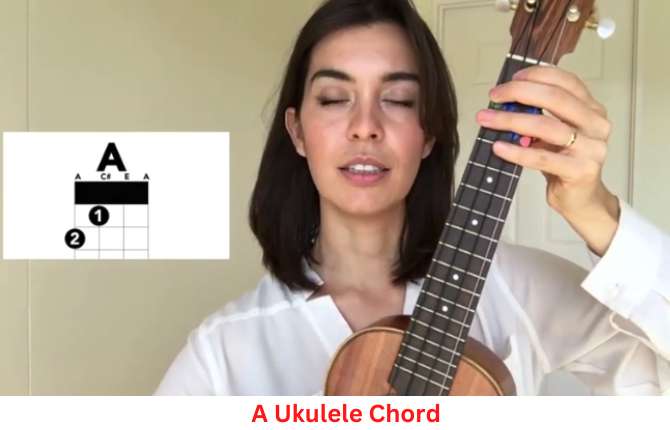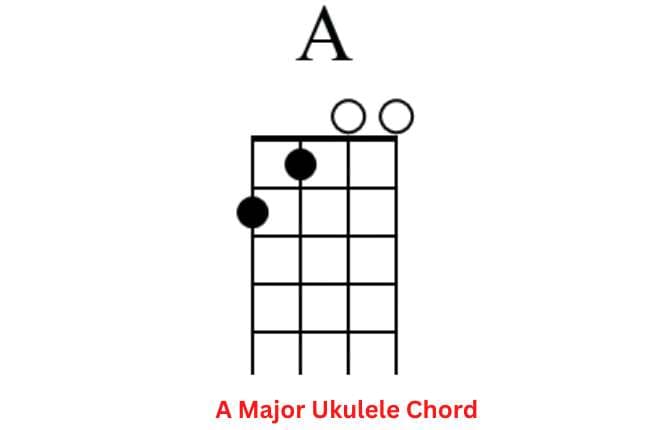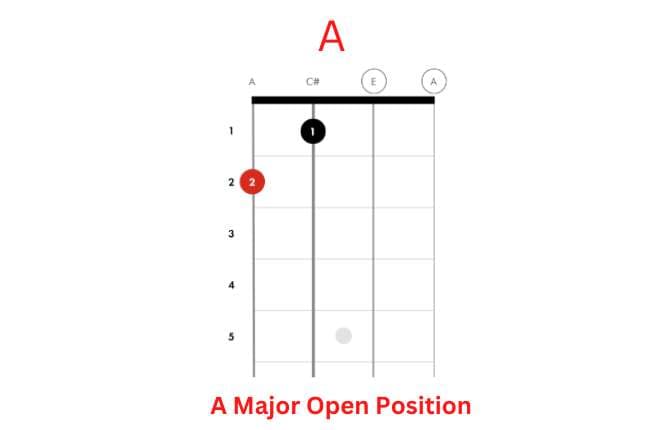
The A ukulele chord (basically called an “A” major chord) features a brilliant, straightforward chord, a necessary addition to any music player’s collection.
We use chords in such a way that they can form the basis for the melody in the music. We apply chords to fix how our music will sound and the notes to create a tune.
A major is the type whose use is used throughout popular music. You might identify the way it produces a sound after listening to it in many recorded songs.
This lesson will create a clear concept about the particular notes making up the chord, a common approach to playing it on the uke, and several songs that utilize the A in prominence.
Basics of the A Major on Ukulele
Before discussing how to play the A uke chord, it might be helpful to mention how chords function generally. Chords essentially contain the characteristic of groups of notes played simultaneously.
The chords are composed of triads in their most basic form. Triads imply the clusters of three notes and comprise the building blocks for most chords, such as major and minor chords.
A major remains in the trio form, actually consisting of these three notes:
- A
- c#
- E
This trio consists of the root note A, then affixing the third (C#) and fifth (E) notes of the A major scale (A, B, C#, D, E, F#, G#).
How to play the A major chord on the ukulele
To master the A, understanding where to put your fingers is crucial on the fretboard of your instrument to create the chord.
In this guide, we’ll present charts to make it visual. At first, we’ll commence with the 4-ukulele string overview and how we refer to them:
- A = The 1st string (maximum-tone string)
- E = The 2nd string
- C = The 3rd string (minimum tone)
- G = The 4th string (nearest to you, glancing down at the fretboard)
Opposite the guitar, where the strings remain in descending order, the uke’s 3rd string is its lowest-toned string.
You’ll find a key here to understand the notes to play the A chord on our uke chord chart. The diagrams show the fretboard, and the used icons or numbers indicate where to position your fingers on each fret or how to perform a particular string on a chord version.
O = A circle above the string refers to playing that string in an open position.
X = An “X” above the strings implies that you won’t play that string or will do it mute when playing one = Index finger two = Mid-finger three = Ring finger four = Pinky finger.
A Ukulele Chord: A major open position (V1)
You can play the A in an open position, meaning playing it with a few open strings is possible, but you don’t need to press any frets for it. Indeed, you require to employ 2 fingers (your mid and index fingers) to squeeze two separate frets for this chord.
To perform the A, begin using your index finger and squeezing on the first fret of the C string. Then, with your mid-finger, squeeze on the second fret of the G string. Don’t utilize your pinky finger or ring finger for the A shape, so keep those fingers away from the fretboard.
Confirm that your mid-finger vaults entirely over the C string so that both fretted notes are clear to hear and it doesn’t accidentally mute or dull neighboring string sounds.
Below are those finger positions once again:
- Index finger: First fret of C (third) string
- Middle finger: Second fret of G (fourth) string
Including the open E and A strings, you strum the four strings of your instrument. Do you observe anything about the top and bottom of the A as you choose every note separately? Indeed, those 1st and last notes remain the same note (A).
Songs that Use The A
After feeling comfy putting your fingers on the fretboard to build the A and playing it several times, putting that knowledge to good use is the time now.
Begin strumming some songs using this chord. You might not only listen to how the A functions with other chords, but also master how to transition between chords.
Commence with a 1961 hit classic song, Stand By Me by Ben E. King. In this immortal song, the A major functions as the key in the progression. Indeed, it’s the leading chord, beginning each verse. It’s the chord that every verse resolves to again.
This song only utilizes 4 different chords, reiterated many times. So it becomes an excellent song for newbies to concentrate on the chord shapes and rapidly transfer between each of them.
If you require more practice, you can look at The Way, a late 1990s alternative rock hit. In this track, the A major doesn’t bring it as long as the start of the chorus, where it takes the audience into a new part of the song.
Conclusion
If you want to get control of the A and others, you have to spend time. Studying familiarity with this chord will help you make it simple to master others using the same shape.
Hopefully, this lesson will meet your needs on the way to learning the A major ukulele chord. Therefore, keep on practicing following this guide.
Read also:

